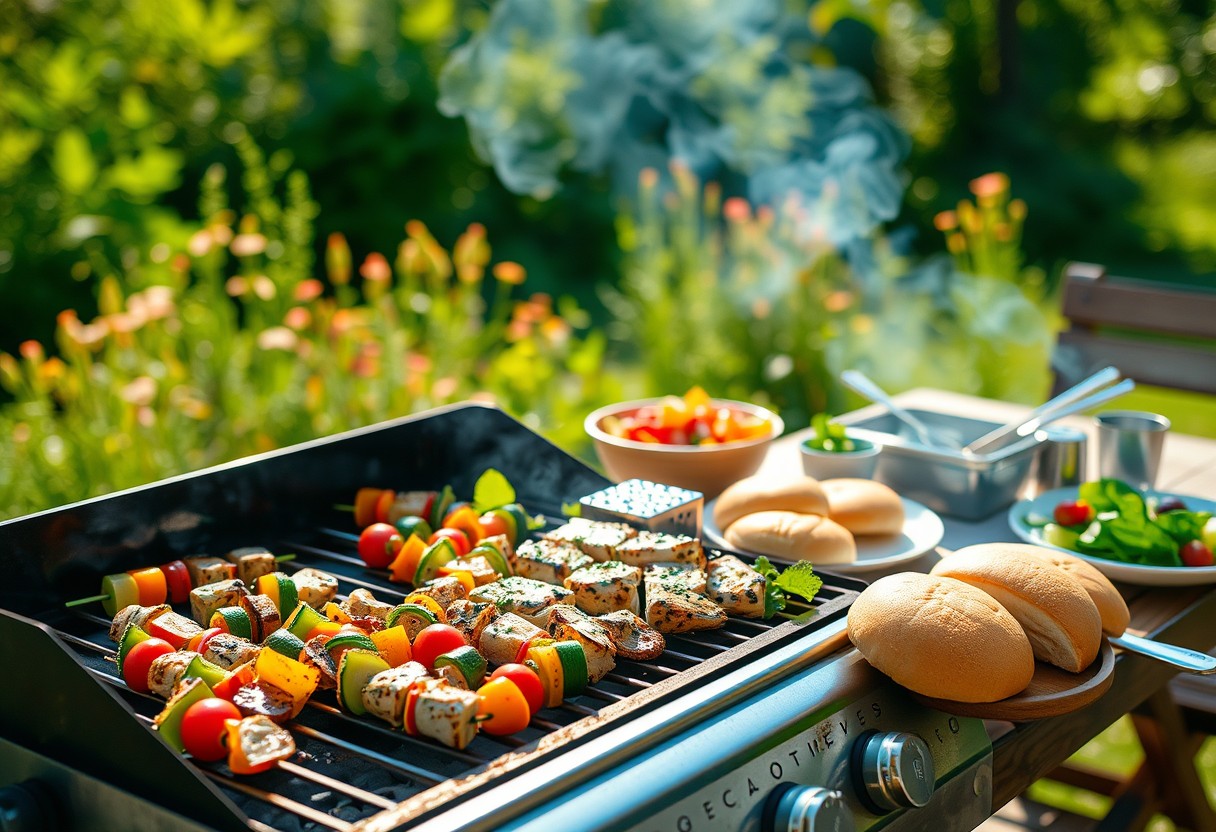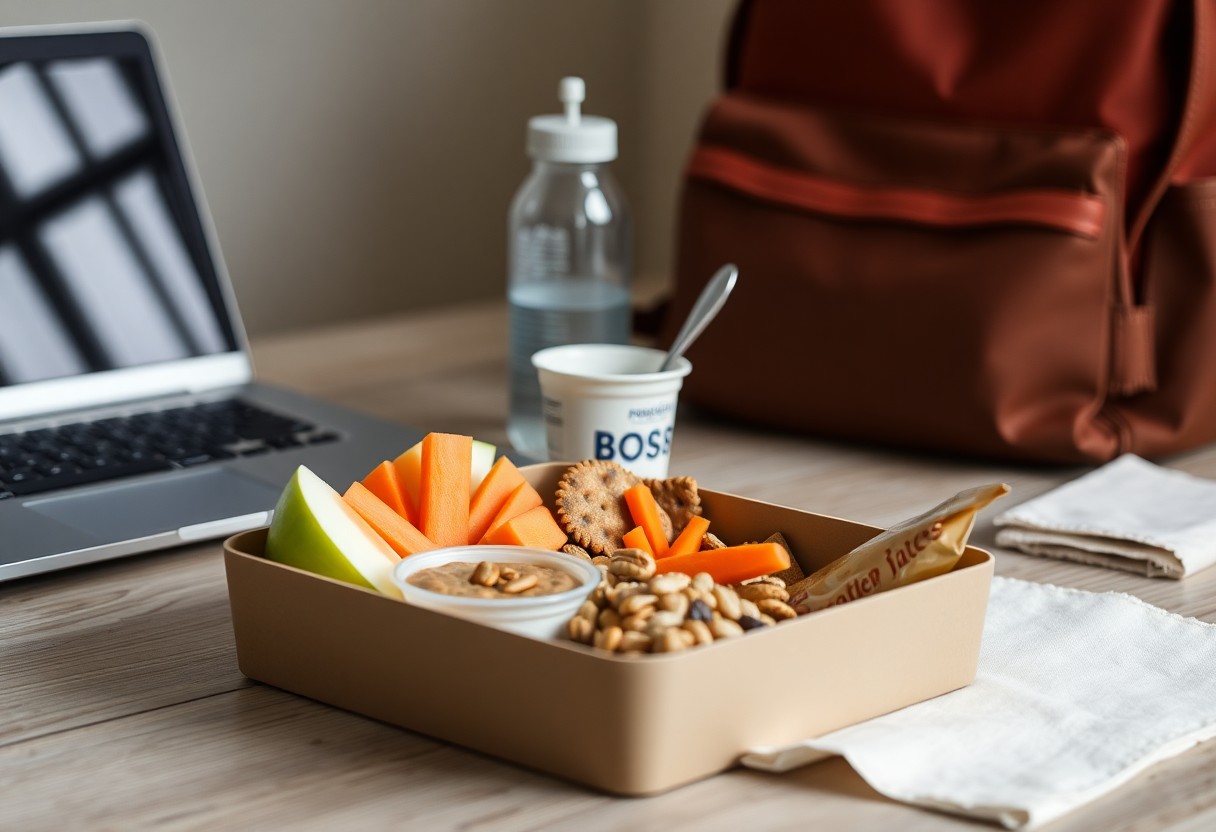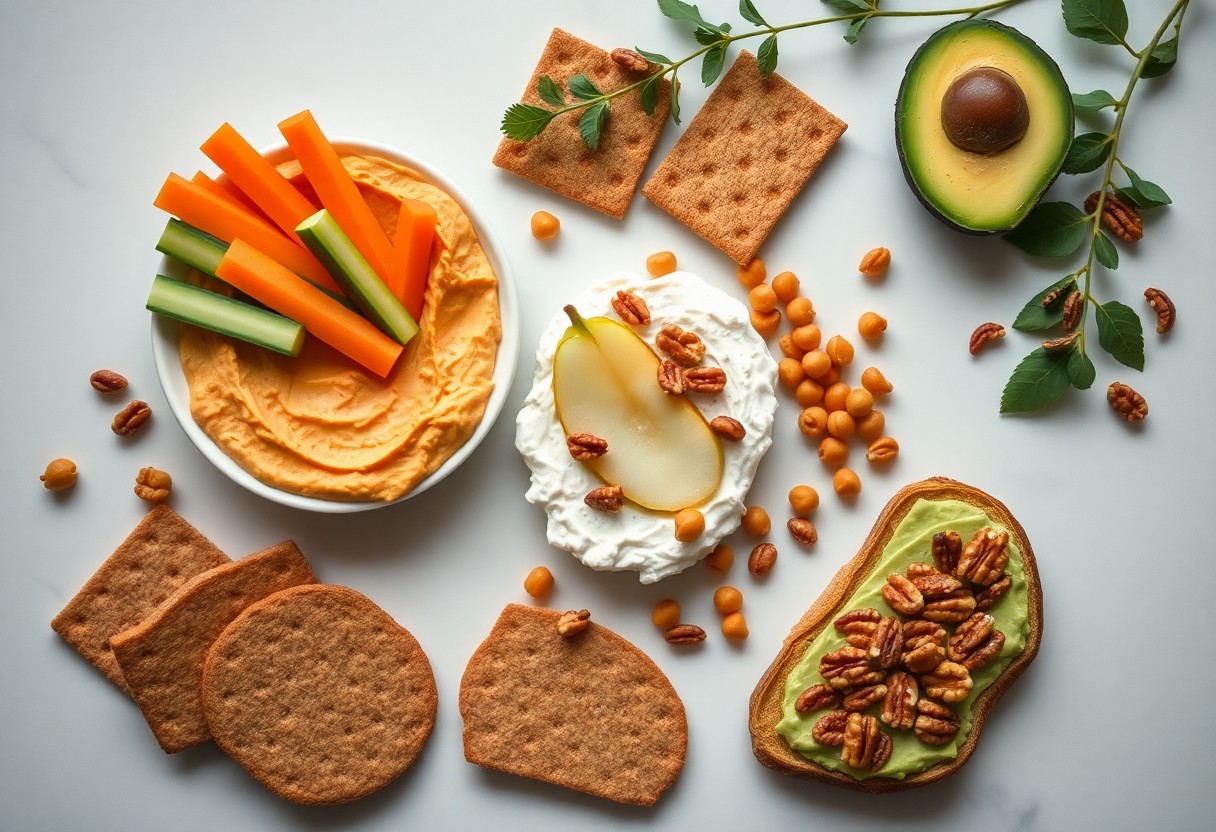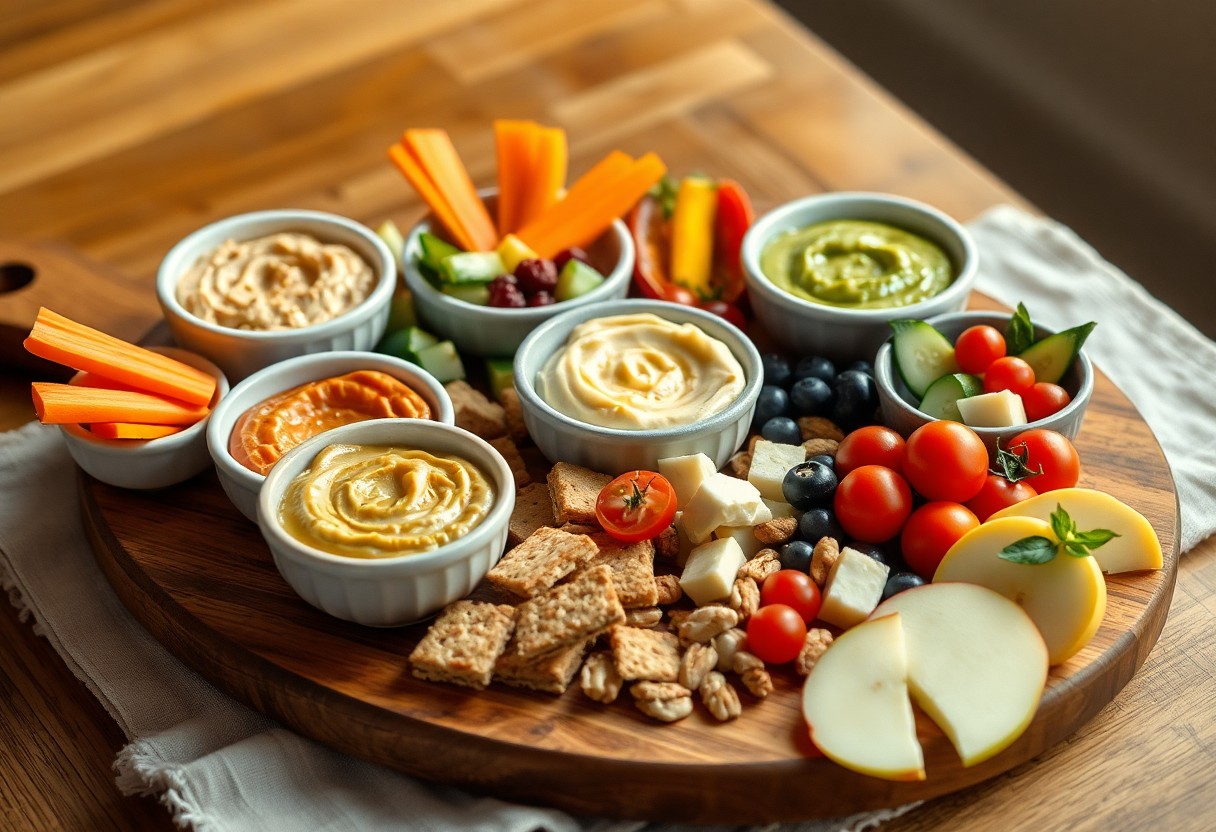Tips for perfectly gluten-free grilling start with understanding that cross-contamination can spoil your meal. Whether you’re a seasoned grill master or a weekend warrior, ensuring that your grill and ingredients are gluten-free is crucial. You want to enjoy delicious flavors without worrying about gluten sneaking into your food. This imperative guide will provide you with key strategies and insights so that your grill-outs are safe, enjoyable, and always delicious. Get ready to fire up those grills with confidence!
Key Takeaways:
- Cross-Contamination Prevention: Ensure all grilling tools and surfaces are thoroughly cleaned to avoid gluten residue.
- Choose Safe Ingredients: Use gluten-free marinades, spices, and sauces to enhance flavor while keeping your meals safe.
- Monitor Cooking Times: Be mindful of cooking times and temperatures to achieve the best texture and avoid undercooking gluten-free foods.
Understanding Gluten and Its Sources
Your journey towards gluten-free grilling begins with a solid understanding of gluten itself. This protein, found in certain grains, can pose significant health issues for those with celiac disease or gluten sensitivity. Knowing what gluten is and where to find it is crucial in avoiding any adverse reactions while cooking outside on the grill.
What is Gluten?
An necessary protein composite, gluten is primarily present in wheat, barley, and rye. It plays a crucial role in giving dough its elasticity and ability to rise, which is why it’s a common component in various baked goods. However, for individuals sensitive to gluten, this same property can lead to a range of health complications, from digestive discomfort to more severe autoimmune responses.
Understanding gluten’s complex structure and its impact on your health is crucial as you navigate your grilling options. As you explore gluten-free alternatives, you’ll soon discover a flourishing world of grains and ingredients that allow you to enjoy great meals without compromising your health.
Common Sources of Gluten
Understanding the common sources of gluten is vital for maintaining a gluten-free lifestyle. You’ll want to be particularly cautious with items like wheat-based products, including breads, pastas, and baked goods, which are typically laden with gluten. Additionally, grains like barley and rye should be strictly avoided, as they also contain gluten.
Moreover, many processed foods, sauces, and marinades can harbor hidden gluten, often listed under names you might not recognize. It’s necessary to read labels carefully and be aware of ingredients that can catch you off guard, such as malt flavoring or certain preservatives, which may derive from gluten-containing grains.
Cross-Contamination Risks
Sources of cross-contamination can present a significant concern when you’re grilling gluten-free. Even if you’re using ingredients that are naturally gluten-free, the risk arises when they come into contact with surfaces or utensils that have been used for gluten-containing foods. This can happen on your grill, cutting boards, or even during food prep if you’re not vigilant.
As you begin on your gluten-free grilling adventure, it’s vital to have a clear strategy to minimize these risks. Designating specific tools and cooking spaces for gluten-free items can go a long way in ensuring your meals remain safe and enjoyable.
A thorough understanding of cross-contamination is invaluable in keeping your meals gluten-free. Even minor traces of gluten can trigger reactions in sensitive individuals, so being diligent in your grilling preparations cannot be overstated. By implementing strict cleaning routines and properly separating gluten-free and regular cooking items, you can create a delicious and safe grilling experience for everyone.
Essential Gluten-Free Grilling Tools
Little do many grillers realize the pivotal role that the right tools play in achieving a perfectly gluten-free grilling experience. As you probe the world of gluten-free cooking, having the appropriate grilling equipment can help you avoid cross-contamination and ensure that your meals are safe for everyone with gluten sensitivities. From choosing the right type of grill to gathering imperative utensils, this guide will set you up for success.
Grill Types Suited for Gluten-Free Cooking
Essentially, the type of grill you choose can significantly impact your gluten-free grilling experience. Gas grills and electric grills are often favored for their ability to maintain consistent cooking temperatures and easier cleanup, reducing the chances of leftover gluten residue from previous uses. Charcoal grills can also be used, but they require a bit more diligence to ensure they are clean.
| Grill Type | Pros |
| Gas Grills | Consistent heat and easy to clean. |
| Electric Grills | Convenient and often portable. |
| Charcoal Grills | Great flavor but requires thorough cleaning. |
| Wood Pellet Grills | Excellent for flavor, requires maintenance. |
- Choose a dedicated grill for gluten-free items.
- Opt for removable grates for easier cleaning.
- Invest in a quality meat thermometer.
- Look for grills with non-stick surfaces.
- Assume that any type of grill can be made gluten-free with proper cleaning.
Must-Have Utensils and Equipment
Utensils play a vital role in ensuring your gluten-free grilling is seamless and enjoyable. Essential tools include dedicated spatulas and tongs that are used exclusively for gluten-free grilling. Having separate utensils prevents cross-contamination and gives you peace of mind while preparing your meal. Moreover, consider investing in a meat thermometer to guarantee your grilled food is cooked to the perfect temperature without any risk of unsafe handling.
Grilling mats are also a practical addition to your toolkit. They help create a barrier between your delicious gluten-free burgers and the grill grates, which may harbor gluten from previous grilling sessions. By using these imperative utensils and equipment, you can easily collaborate with your grill to deliver safe and scrumptious meals that everyone can enjoy.
Cleaning Tools for Safe Grilling
Grill maintenance is a crucial aspect of successful gluten-free grilling. Clean your grill thoroughly before cooking to ensure that no gluten residues are left over from previous meals. It’s imperative to have a good brush for scraping down grill grates, a sponge for cleaning surfaces, and food-safe sanitizers to eliminate any gluten particles that may remain.
A dedicated cleaning set can go a long way in supporting your gluten-free grilling efforts. Ensure that you store these cleaning tools separately from others used for gluten-containing grills or appliances. By doing so, you minimize the risk of cross-contamination and assure that every grill out is a safe and enjoyable experience for all your guests.

Preparing for a Gluten-Free Grill
To ensure a successful gluten-free grilling experience, preparation is key. This involves a combination of planning your menu, choosing the right gluten-free ingredients, and being mindful of the marinades and seasonings you use. By taking these steps, you’ll be well on your way to enjoying delicious and worry-free grilled meals.
Planning Your Menu
One of the first steps in preparing for gluten-free grilling is to plan your menu carefully. Consider what types of proteins, vegetables, and side dishes will complement each other while being completely free from gluten. Incorporating a variety of colorful vegetables and gluten-free grains, like quinoa or rice, can create a vibrant and satisfying meal. Don’t forget to include options for any guests who might also have dietary restrictions, ensuring that everyone can enjoy the grill.
One effective approach is to create a theme for your meal, such as a Mediterranean feast with grilled chicken skewers and a fresh cucumber salad. This not only simplifies your shopping list but also allows you to focus on specific gluten-free ingredients that align with the theme, reducing the risk of unintentional gluten exposure. By laying out a clear plan, you’re setting yourself up for a successful grilling experience.
Choosing Gluten-Free Ingredients
Preparing your grilling experience also means being judicious about the ingredients you select. Opt for whole, unprocessed foods, such as fresh meats, fish, vegetables, and gluten-free grains. Be sure to read ingredient labels, as many pre-packaged items can contain hidden gluten, and always choose certified gluten-free products whenever possible. This guarantees that your ingredients meet strict gluten-free standards.
To ensure that your grill is entirely gluten-free, it’s also important to check the sauces, marinades, and any store-bought condiments you’ll be using. They can often contain gluten even in the most unexpected forms, so a little vigilance on your part can prevent cross-contamination and keep your meal safe.
Marinades and Seasonings to Avoid
One area that can trip you up is the marinades and seasonings you choose. Many common marinades contain soy sauce, malt vinegar, or other gluten-containing ingredients. Instead, look for gluten-free alternatives like tamari or prepare your marinades at home to have complete control over the ingredients. It’s imperative to double-check labels, as what seems like a simple seasoning blend could contain hidden gluten sources.
Avoid marinades that list malt or wheat as part of their ingredients. Being mindful of what you are adding to your dishes not only protects your health but also enhances the flavors of your grilled creations. By substituting or making your own marinades, you’ll be opening up a world of delicious gluten-free grilling options.
Safe Grilling Practices
For anyone who is committed to a gluten-free lifestyle, practicing safe grilling techniques is crucial to avoid any cross-contamination. Grill surfaces, utensils, and the overall cooking environment can easily harbor gluten, leading to potential health issues. Therefore, following consistent and careful procedures when grilling ensures that your meals are safe and delicious every time.
Establishing a Dedicated Gluten-Free Space
The first step in safe grilling is to create a dedicated gluten-free space. This area should be free of any items that may contain gluten, including sauces and marinades that could splatter on your food. Ideally, it should include separate utensils, cutting boards, and grills. If this is not possible, be vigilant about thoroughly cleaning any shared equipment before you start cooking, keeping in mind that even traces of gluten can lead to issues for those with gluten sensitivity.
The importance of a designated area cannot be overstated; it provides peace of mind and assures you that your grilling routine is safe. Furthermore, this measure helps you to organize and streamline your cooking process, making it easier to focus on preparing delicious gluten-free meals without the worry of cross-contamination.
Properly Cleaning Grilling Surfaces
The cleanliness of your grilling surfaces plays a vital role in ensuring that your food is gluten-free. Start by removing any leftover crumbs or residue from previous non-gluten-free meals. Use a dedicated gluten-free scrub brush and natural cleaning agents to eliminate any lingering gluten. Additionally, heat up your grill to its highest temperature for at least 15 minutes before you begin cooking; this helps to burn off any potential residues.
Properly cleaning your grilling surfaces not only prevents cross-contamination but also ensures that your food retains its intended flavors. Involving family and friends in this cleaning process can also be a way to educate them about the importance of gluten-free practices, enhancing everyone’s awareness and commitment to your gluten-free grilling efforts.
To ensure thorough cleaning, you might also want to consider a two-step method. Start with a simple scrape-down of the grill grates while it’s still warm, followed by a more rigorous scrub down using gluten-free approved cleaning agents. This will remove any remaining particles, ensuring your grates are pristine and ready for your next meal.
Managing Cooking Times and Temperatures
Properly managing cooking times and temperatures is important for achieving perfect gluten-free grilled dishes. Each type of food has a specific recommended cooking time and temperature, which can help you avoid undercooked or overcooked items. For instance, meats should generally reach a minimum internal temperature to be safe for consumption, while vegetables may require shorter cooking times. Understanding these nuances plays a significant role in your grilling success.
| Food Item | Recommended Internal Temperature |
|---|---|
| Pork | 145°F (63°C) |
| Poultry | 165°F (74°C) |
| Beef | 135°F (57°C) for medium rare |
| Vegetables | Cook until tender |
With this proper knowledge at your disposal, you can effectively plan your grilling sessions. Timing and temperature control not only ensure that your food is cooked safely but also enhance the overall flavor and texture of your grilled items. Always keep a meat thermometer handy for precision, eliminating any guesswork about the doneness of your meals.
With accurate management of cooking times and temperatures, you can elevate your grilling experience significantly. Prepare a chart or take notes on ideal cooking times for each ingredient, enabling you to have everything cooked to perfection each time you fire up the grill. This way, you focus on enjoying your delicious gluten-free dishes without any hassle!

Delicious Gluten-Free Grilling Recipes
Many people often think that gluten-free grilling limits their choices, but there are countless delicious and satisfying recipes you can try. With the right ingredients and a little creativity, you can create mouthwatering dishes that are perfect for your next cookout. Let’s probe some crucial options that will keep your grill happy and your taste buds satisfied.
Grilled Meats and Poultry
Meats and poultry take center stage when it comes to grilling, and the great news is that they are naturally gluten-free. Whether you’re marinating chicken, steaks, or ribs, be sure to use gluten-free sauces and seasonings to elevate your flavors. Marinades made with fresh herbs, garlic, lemon juice, and gluten-free soy sauce can add an incredible depth of flavor to your grilled meats. It’s important to let your proteins soak in those flavors for at least 30 minutes before hitting the grill for the best results.
In addition to marinades, consider using a dry rub that incorporates your favorite spices. A mix of smoked paprika, cumin, and a hint of cayenne pepper can create a savory crust on your meats once grilled. Just remember to handle utensils and surfaces carefully to avoid cross-contamination, ensuring your meal remains gluten-free.
Flavorful Grilled Vegetables
With grilling, vegetables can shine just as brightly as your meats do. The charred flavor of grilled vegetables elevates any meal and adds a healthy element to your cookout. You have a wide variety of fresh vegetables at your disposal, from bell peppers and zucchini to asparagus and corn. Drizzle them with gluten-free olive oil and sprinkle with herbs or spices before grilling. Not only does this enhance taste, but it also creates a beautiful appearance that adds vibrancy to your table.
The grilling process caramelizes the sugars in vegetables, giving them a delicious sweetness that contrasts perfectly with your savory meats. Remain mindful of any glazes or dressings you might use; they should be gluten-free to keep your meal safe for those with sensitivities. Try grilling your vegetables in a basket or on skewers to prevent them from slipping through the grates.
Creative Gluten-Free Skewers
Grilled skewers are an excellent way to combine flavors and get creative with your gluten-free cooking. You can mix and match proteins, fruits, and vegetables on the same skewer for a delightful blend of tastes and textures. Chicken, shrimp, and even firm tofu can be paired with bell peppers, cherry tomatoes, and pineapple. Be sure to season each component before grilling for optimal flavor.
Additionally, marinating your skewers can introduce exciting flavors, so experiment with different gluten-free sauces and spices. Just keep an eye on cooking times as different ingredients may require varying amounts of time on the grill. Skewers are not only versatile but also visually appealing, making them perfect for sharing at gatherings.
Poultry is a fantastic protein choice for grilling skewers. Chicken pieces can absorb marinades and flavors exceptionally well, making them tender and juicy after cooking. Pair your skewered chicken with grilled fruits like peaches or pears to create a perfect balance of savory and sweet. With the right preparation and marinade, your gluten-free skewers will surely be a hit at any cookout.
Ensuring Flavor without Gluten
Not every dish has to rely on wheat or gluten-rich products to deliver an explosion of flavor. You can create mouthwatering meals on the grill by incorporating a variety of alternative grains and gluten-free breads that not only enhance taste but also add texture to your dishes.
Alternative Grains and Breads
For your grilling adventures, consider using grains and breads made from quinoa, rice, corn, or buckwheat. These alternatives are not only gluten-free but also packed with nutrients that can elevate your meals. Quinoa, for example, presents a nutty flavor that complements grilled vegetables beautifully, while corn tortillas can bring that traditional taste to your favorite tacos or wraps. Additionally, gluten-free breads designed specifically for grilling can serve as a fantastic vehicle for your proteins and toppings.
When shopping for alternative breads, look for those specifically marked gluten-free to ensure there are no hidden gluten ingredients. Many brands offer excellent options that don’t sacrifice flavor or texture. By experimenting with these alternatives, you can keep your meals diverse and equally appealing to those who may not be adhering to gluten-free diets.
Flavor Enhancers and Sauces
Sauces play a critical role in enriching your grilled meals and they don’t have to be off-limits just because you are avoiding gluten. You can create delicious marinades and BBQ sauces using gluten-free ingredients such as tamari, which is a gluten-free soy sauce, or coconut aminos, which works wonderfully as a soy sauce alternative. Spice pastes, homemade marinades, and salsas made with fresh ingredients can also be delightful options to amp up the flavor of proteins and vegetables alike.
When experimenting with sauces, remember that they need not be complicated. A simple blend of herbs, citrus juices, and olive oil can turn your grilled vegetables or proteins into a culinary masterpiece. Always be sure to check labels on store-bought sauces to avoid those containing gluten ingredients. The right sauce can make your grilling experience truly unforgettable.
Breads can also be a delightful complement to your grilled meals, and the right choice can enhance your overall grilling experience. Whether you opt for gluten-free pita, buns, or wraps, ensure they are specifically labeled as gluten-free to avoid any cross-contamination. These options allow you to craft sandwiches or burgers that are both satisfying and safe for those with gluten sensitivities.
Tips for Perfectly Seasoned Grilled Foods
Alternative seasonings are key to ensuring your grilled foods are flavorful without gluten. As you prepare your dishes, utilize a variety of herbs and spices to develop a rich taste profile. Consider creating your own spice blends or using fresh herbs to elevate your meats and vegetables. Here are some tips to ensure a beautifully seasoned grill experience:
- Marinate your proteins for at least 30 minutes to a few hours.
- Use sea salt or kosher salt to enhance flavor without worrying about gluten.
- Incorporate citrus zests to brighten up your grilled vegetables.
- Don’t shy away from experimenting with fusion spices or flavor profiles.
The key to successful grilling lies in being bold and adventurous with your seasonings.
For instance, you might discover a new favorite by blending smoky paprika with garlic powder, or by creating a tangy marinade with lemon juice and fresh herbs. This exploration can result in vibrant flavor combinations that delight your palate. Here’s a quick list of ideas to consider:
- Experiment with different oil bases, like avocado or sesame oil.
- Use gluten-free Dijon mustard for added kick in your marinades.
- Try infusing your sauces with fruits like mango or pineapple for sweetness.
- Utilize fresh garlic and onion as foundational flavors in your seasoning.
The right combination of alternative grains, flavorful sauces, and seasoned goods holds the secret to a successful gluten-free grilling experience every time.
Frequently Asked Questions
All your questions about gluten-free grilling are important, and understanding the nuances can help you make informed decisions for your meals. Below, we address some common inquiries to help you navigate the gluten-free landscape with confidence.
How to Identify Gluten-Free Products?
On your quest for gluten-free grilling, being able to identify appropriate products is imperative. Always look for items labeled as “gluten-free,” which must adhere to strict FDA guidelines. Familiarize yourself with common gluten-containing ingredients, such as wheat, barley, and rye, and remember to check the ingredient lists on all packaged foods. You can also rely on gluten-free certification logos from recognized organizations, which provide an extra layer of assurance.
Another effective tactic is to familiarize yourself with brands known for their gluten-free offerings. Some brands specifically cater to gluten-free consumers, ensuring their products do not cross-contaminate with gluten. Be vigilantly observant in grocery stores, as many now have dedicated gluten-free sections that can simplify your search.
Tips for Dining Out When Gluten-Free
With the growing awareness of gluten intolerance, many restaurants now offer gluten-free options. When dining out, it’s wise to communicate your dietary requirements to your server clearly, as this ensures they can guide you toward suitable menu choices. Here are some practical tips to keep in mind:
- Research restaurant menus online before your visit.
- Ask staff about their gluten-free protocols to avoid cross-contamination.
- Inquire about cooking methods as fried foods may use shared oils.
- Perceiving care and transparency from the restaurant can greatly enhance your dining experience.
Furthermore, consider visiting establishments that specialize in gluten-free cuisine, as they are more likely to take precautions for your safety and satisfaction. Many restaurants are now implementing specific measures, like using separate utensils and equipment, to keep gluten-free dishes intact. This thoughtful approach can give you peace of mind when ordering, knowing they prioritize your dietary needs.
- Don’t hesitate to speak up if you have concerns about your meal.
- Be aware that gluten-free sauces and marinades need to be double-checked for gluten-containing ingredients.
- Choose dishes that are naturally gluten-free, such as grilled meats and salads.
- Perceiving diligence in food preparation can alleviate any worries you have while dining out.
Common Mistakes to Avoid
Avoid these common pitfalls while grilling gluten-free food to ensure a successful experience. One frequent error is neglecting to clean your grill thoroughly before cooking. Residue from past grilling sessions may contain gluten, leading to cross-contamination. Additionally, don’t just rely on sauces labeled gluten-free without checking; sometimes, they can incorporate hidden gluten ingredients. Always be proactive and take the time to verify every component of your meal.
For instance, using the same utensils for gluten-free and gluten-containing foods could lead to accidental exposure. Make it a habit to dedicate specific cooking tools and serving dishes purely for gluten-free items to mitigate any risk present. Prepare your meals with caution and mindfulness, ensuring your grilling process remains both delicious and safe. Becoming familiar with these common mistakes will empower you to enjoy flavorful gluten-free grilling every time you step up to the grill.
Summing up
On the whole, mastering gluten-free grilling requires attention to detail and a commitment to cleanliness. By ensuring that your grill is thoroughly cleaned before cooking and utilizing separate utensils and surfaces, you create a dedicated space for gluten-free foods. Moreover, always read ingredient labels carefully, as hidden gluten can lurk in marinades, sauces, and pre-packaged items. Being well-informed about what constitutes gluten can save you from potential cross-contamination and help you serve up delicious, safe meals for you and your guests.
Incorporating these important tips into your grilling routines will enhance your culinary experience while keeping gluten sensitivities at bay. Experiment with a variety of gluten-free ingredients and flavors to make your grilling sessions not just safe, but also exciting and flavorful. With these strategies in hand, you’ll be well-equipped to host enjoyable outdoor gatherings that cater to all dietary needs, allowing you to savor the joys of grilling without worry.





Leave a Reply